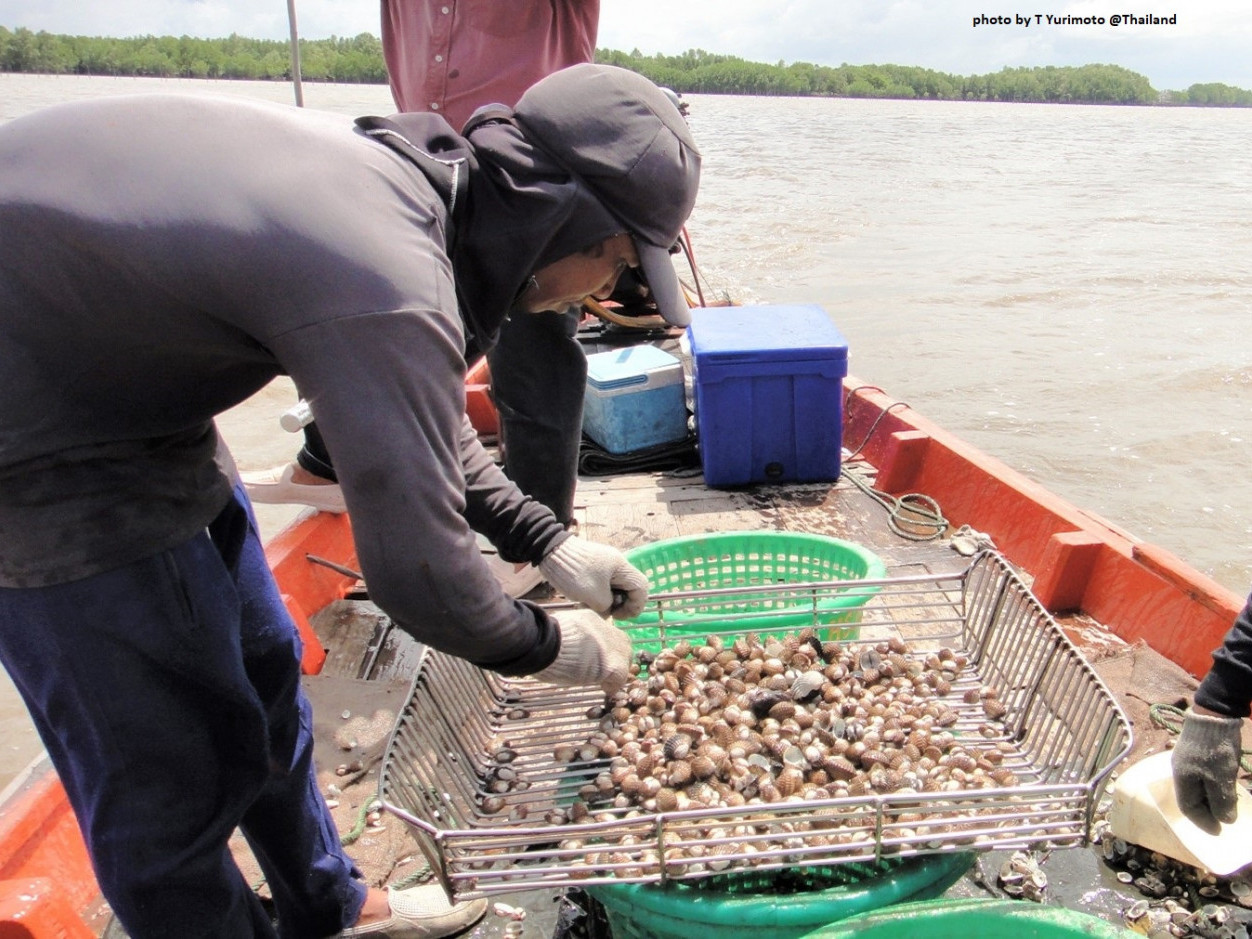Pick Up
504. Climate Change Effects on Blood Cockle Aquaculture

The United Nations General Assembly has designated the year 2022 as the International Year of Artisanal Fisheries and Aquaculture (IYAFA 2022) to raise awareness on the role of small-scale fishing and aquaculture, strengthen science and policy interactions, enable stakeholders to take action, build new partnerships, and strengthen existing partnerships. This article presents a case study of mass mortality of blood cockle in a sowing aquaculture fishery in Thailand during the rainy season, and considers measures to stabilize production.
The Welu estuary, with its vast mangrove forests, is located on the southeastern coast of Thailand, about 50 km west of the Cambodian border. It is rich in phytoplankton, which provides food for bivalves, and thus is a popular site for aquaculture of blood cockle (Tegillarca granosa), a saltwater clam that possesses red-colored bodily fluids owing to the presence of hemoglobin. However, during the rainy season, large numbers of blood cockle have been dying in the Welu estuary. Therefore, JIRCAS, in cooperation with the Chanthaburi Coastal Fisheries Research and Development Center of the Thai Department of Fisheries and others, conducted research on the actual situation.
As a result, in July of the year when the mass mortality occurred, there was about twice as much rainfall as usual, and regular observations showed that the salinity around the fishing grounds remained low for a long period of time, at less than 1/3 of the normal level. In addition, when we collected the surviving blood cockle in the fishing grounds during the same period and observed the tissues of various organs with an optical microscope, we found that most of the blood cockle were in the spawning season, but their digestive tracts were empty and they were not feeding on any food.
From these observations, it was inferred that the blood cockle died of starvation due to the effects of low salinity, lack of food in the fishing grounds, or their own poor feeding habits. In addition, the climatic data over time indicated that rainfall tends to increase in July in this region, which accelerated the timing of the salinity drop in the estuary and it was more likely that the condition was prolonged. In other words, it was inferred that climate change was affecting the mass mortality of the blood cockle.
In order to sustain blood cockle cultivation in this area, the salinity as well as phytoplankton blooms are important factors, and it is necessary to develop new fishing grounds with sufficient phytoplankton blooms and a stable salinity. If this is not feasible, it is necessary to take measures such as using different fishing grounds for the rainy season and the dry season for aquaculture.
These results were published in the international journal Fisheries & Aquatic Life with the title Histological observations of the blood cockle, Tegillarca granosa (L.), after a mass mortality event in Welu estuary, Thailand.
Reference
Yurimoto T, Chaweepack T, Matsuoka K and Sangrungruang K (2021). Histological observations of the blood cockle, Tegillarca granosa (L.), after a mass mortality event in Welu estuary, Thailand. Fisheries & Aquatic Life 29: 230-238, DOI:10.2478/aopf-2021-0025, https://sciendo.com/es/article/10.2478/aopf-2021-0025
Contributor: YURIMOTO Tatsuya (Fisheries Division)
